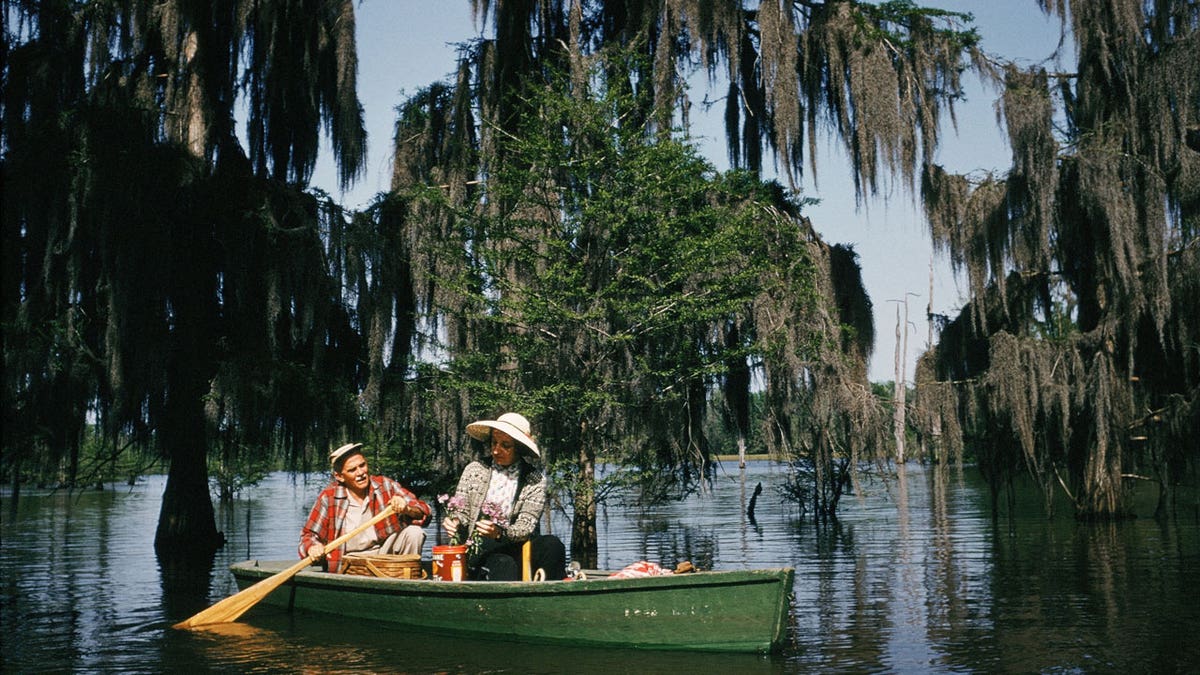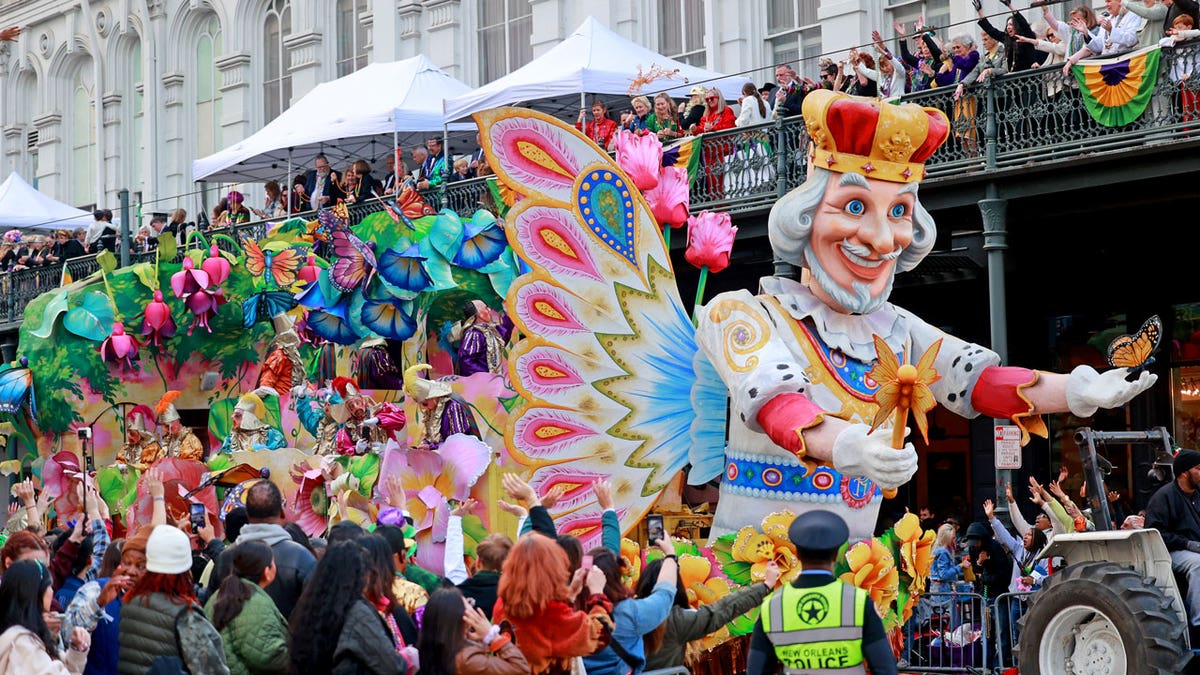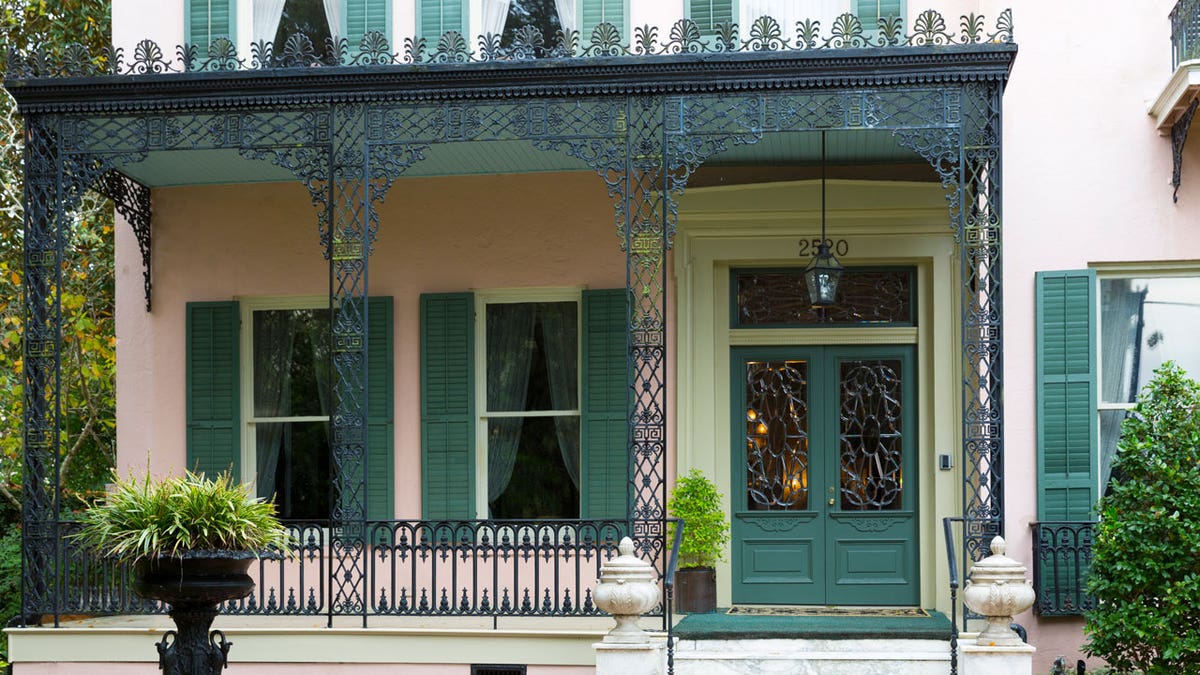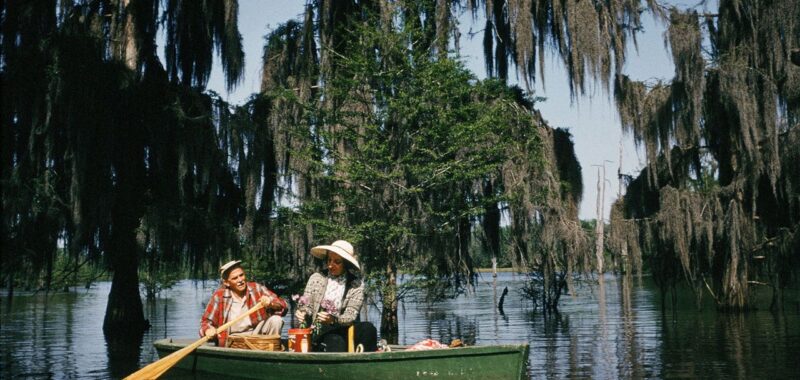Louisiana is a state with a rich cultural history and an irresistible charm.
While almost everyone has heard of Louisiana Cajun cooking and New Orleans’ Mardi Gras celebration, the Bayou State has even more to offer.
Louisiana is home to a litany of festivals all year round as well as nearly two dozen state parks and 10 state museums. And, of course, Cajun food and Creole food; as any Louisiana native would tell you, there is a difference.
Louisiana state parks
Louisiana’s 21 state parks are dispersed across its northern, central and southern regions. Water sports, hiking and fishing are popular activities in the parks, and many flock to the parks to witness the seasonal migration of diverse varieties of birds.
NEW ORLEANS JAZZ FEST TO FEATURE VIBRANT CULTURAL SHOWCASE AND CULINARY DELIGHTS
Chicot State Park
Chicot State Park is the largest in Louisiana at 6,400 acres. The park is popular among canoeing, kayaking and fishing enthusiasts, and it has even been the site of state record-setting freshwater catches. Visitors can hike trails around Lake Chicot and keep their eyes peeled for wild creatures like deer and bobcats that call the rural park home.
The park is also the site of the Louisiana State Arboretum, a 300-acre forest that is a favorite of camping fans. Miles of hiking trails, including boardwalks over the water, are waiting to be explored, and boating around the cypress trees growing out of the water is an experience unlike any other.

A couple picnics in a canoe in Chicot State Park, which is Louisiana’s largest state park at 6,400 acres. (Ivan Dmitri/Michael Ochs Archives/Getty Images)
Fontainebleau State Park
Fontainebleau State Park is located about an hour from New Orleans. Inside the park, visitors can imagine the hustle and bustle of what used to be the sugar plantation on which the park is now built. Aged brick ruins still dot the landscape, and the park offers an educational experience with items such as old handcrafted tools on display.
Fontainebleau offers campsites, hiking trails and a scenic pier over Lake Pontchartrain, as well as swimming at the lakefront and cabins with beautiful lakeside views. Its 2,800 acres contain ample opportunities to see more than 400 species of birds and other wildlife that live or migrate through the park. Like most of the Pelican State, Fontainebleau State Park falls within the Mississippi Flyway, a bird migration route that stretches from central Canada to the Gulf of Mexico, so if you time your visit just right, you could be in for a show.
Cajun and Creole food in Louisiana
Though the terms are sometimes used interchangeably, a native Louisianian would never get them twisted.
‘MESSY AND HANDS-ON’: GRILLED CRAWFISH BOIL RECIPE TO PULL OFF A TRADITIONAL SUMMER AFFAIR
Cajun food
Cajun food comes from the French colonists who lived in the Acadia region of Canada before they were ousted by the British and subsequently moved to Louisiana. The term “Cajun” is derived from the name for this group in French, “les Acadiens.”
Cajun food is known for its abundant seasoning, especially cayenne pepper, and using a base of celery, onion and bell pepper. The French colonists’ influence mixed with the other cultures of the bayou to produce what we today think of as Cajun-style cooking.
Creole food
It is sometimes said that Creole food is from the city and Cajun food is from the countryside. This may be because Creole food originated in high-society kitchens, where it was typically cooked by slaves who had access to a wider variety of ingredients and spices. As a result, the Creole cultural blend that includes Spanish, African, Caribbean, Native American, German and Portuguese influences seeped into the cooking and produced dishes that involved a greater number of components than most Cajun food. Cajun food is also less likely to contain tomatoes.

New Orleans is known for its yearly Mardi Gras celebration. The festival is one product of Louisiana’s unique cultural blend, but there is much more to the rich history of the Pelican State than Mardi Gras alone. (Michael DeMocker/Getty Images)
Museums in Louisiana
Though Louisiana is home to more than 10 museums, its 10 state museums are some of its most popular.
1850 House
The 1850 House is a model of what an upper middle-class New Orleans home might have looked like in 1850, a prosperous time period for the city.
The Cabildo
The Cabildo is one of New Orleans’ most important historical buildings. It is where the Louisiana Purchase transfer ceremonies took place in 1803 and where the landmark Plessy v. Ferguson decision was given in 1892. Much more has happened here, but since 1908, the Cabildo has served as a Louisiana history museum.
Capitol Park Museum
This museum traces Louisiana’s unique cultural heritage, explaining how European colonists, Native Americans and enslaved Africans came together to create the culture of the Bayou State. Rotating and permanent exhibits expose Louisiana’s diverse history.
CLICK HERE TO SIGN UP FOR OUR LIFESTYLE NEWSLETTER
E.D. White Historic Site
On the scenic Bayou Lafourche, this National Historic Landmark was home to Edward Douglas White, governor from 1835 to 1839, and his son, Edward Douglass White, the U.S. Supreme Court chief justice from 1910 to 1921. The museum explores the family‘s history as well as that of the Bayou Lafourche region, featuring exhibits on the Chitimacha Indians, Acadian settlers, slavery and sugar cane plantations.
Louisiana Civil Rights Museum
The Louisiana Civil Rights Museum features three dynamic exhibits titled “the Right to Assemble,” “the Right to Education” and “the Right to Vote.” They bridge the gap between late-19th century events and the modern civil rights movement through videos, oral histories and an interactive virtual reality room.
Louisiana Sports Hall of Fame & Northwest Louisiana History Museum
Two museums were combined into one site. As you might expect, the Louisiana Sports Hall of Fame lauds the achievements of Louisiana athletes and coaches, illustrating sports’ importance in Louisiana life. The Northwest Louisiana History Museum honors the history and culture of the region.
Madame John’s Legacy
Madame John’s Legacy is another National Historic Landmark and one of the best examples of French colonial architecture in North America. It is one of the few remaining Louisiana-Creole, 18th-century residential-style buildings.

The wrought iron fretwork seen on this building in the Garden District of New Orleans is one design element characteristic of French-Creole architecture. (Tim Graham/Getty Images)
New Orleans Jazz Museum at the Old U.S. Mint
The New Orleans Jazz Museum is in the heart of the city’s vibrant music scene, right on Frenchman Street’s live music corridor. The museum includes a state-of-the-art performance venue with a near-perfect sound environment used to record performances for historical archives. The Jazz Museum promotes the global understanding of jazz as one of the most historically pivotal musical art forms in world history.
The Presbytère
The Presbytère features a permanent exhibit on Mardi Gras, diving into the history and culture of the yearly festival, and another on Hurricane Katrina and the ensuing rescue, rebuilding and renewal. The building was designed in 1791 to match the Cabildo and was built on the site of the residence, or “presbytère,” of Capuchin monks.
Wedell-Williams Aviation & Cypress Sawmill Museum
The Wedell-Williams Aviation Collection tells the story of Louisiana aviation pioneers Jimmie Wedell and Harry P. Williams. The Cypress Sawmill Collection documents the history of the cypress lumber industry in Louisiana, the state’s first significant manufacturing industry.
Louisiana festivals
Aside from sampling regional cuisine, exploring natural wonders and learning American history, there is always a festival or celebration of some kind going on in Louisiana. The ever-popular Mardi Gras serves as the state’s calling card, but cultural enrichment opportunities abound all year round.
CLICK HERE TO GET THE FOX NEWS APP
Louisiana’s Red River Revel
In downtown Shreveport in autumn, the Red River Revel comprises musical performances all day for nine days in a row. Businesses and families alike take advantage of the lively atmosphere to network and bond as they admire the artwork on display by visual artists who congregate to sell their pieces.
Louisiana’s World Championship Gumbo Cookoff
This food festival is another fall favorite that includes live music and plenty of activities for the whole family. In downtown New Iberia, a weekend of local cooking competitions determine the yearly winner of the Gumbo Cookoff, Youth Gumbo Cookoff, Meanest Beans Competition and more.
A Taste of Covington Food, Wine, Music & Art Festival
Each June sees the monthlong Food, Wine, Music & Art Festival return to Historic Downtown Covington. The month is filled with special events like wine tastings and Vintners’ Dinners, during which participating restaurants cook gourmet meals served with wine pairings. Proceeds benefit marketing for local businesses through nonprofit organizations.
For more Lifestyle articles, visit www.foxnews.com/lifestyle.

